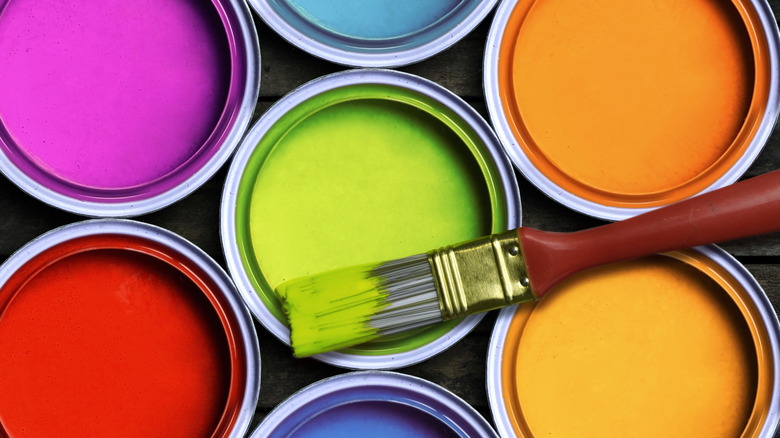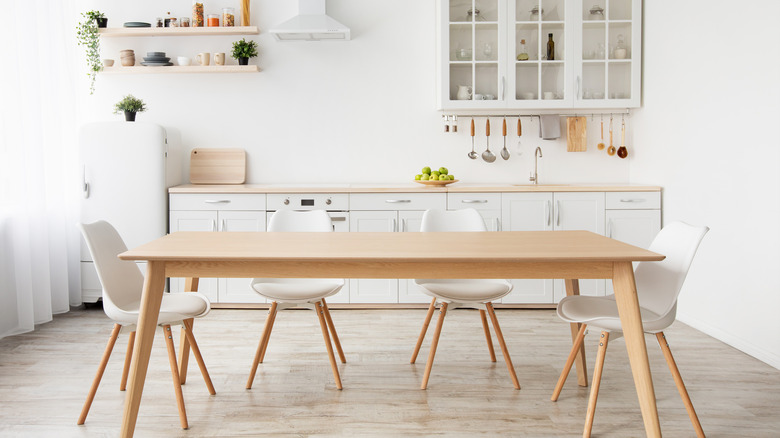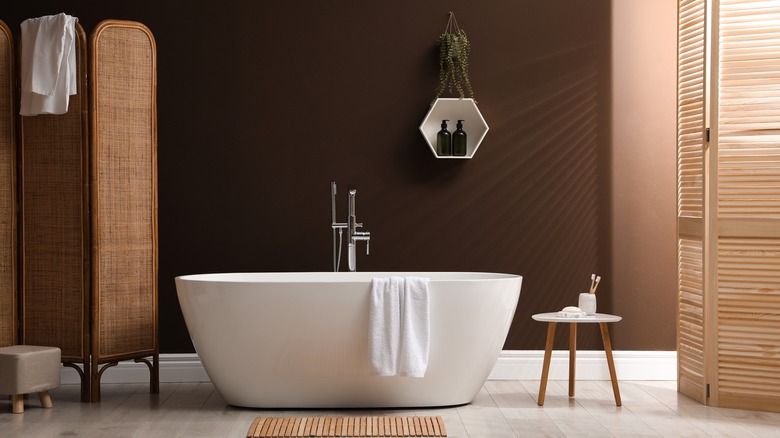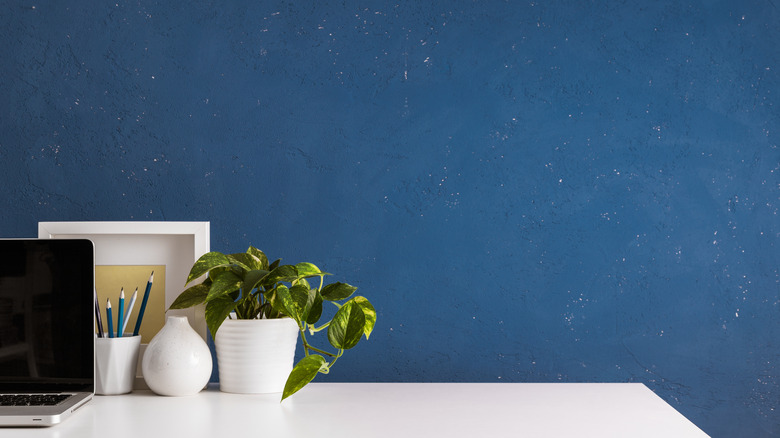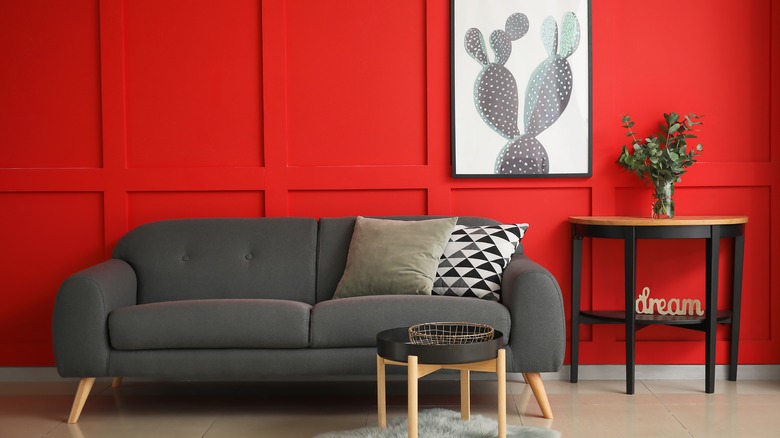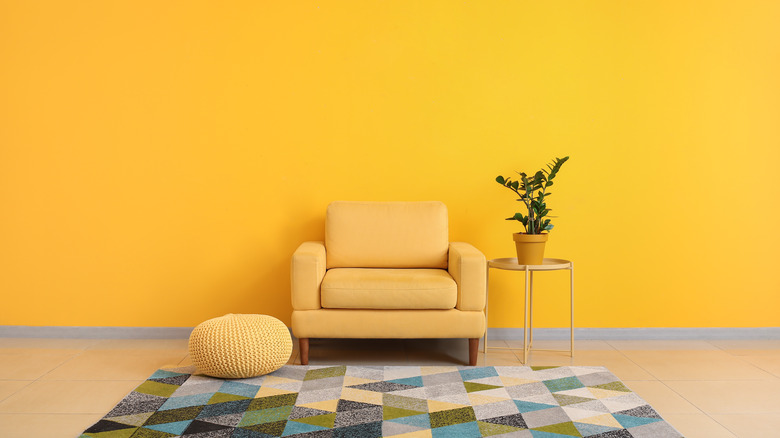Don't Paint Compact Areas In Your Home In These Colors
Compact spaces in your home, such as bathrooms, closets, entryways, and small bedrooms, are often painted white. Not necessarily because the owners like color, but because everyone is told that white is the best and only color you can paint these smaller areas. However, modern designers are changing this narrative, saying that white won't really make the place appear any larger.
Many colors can liven up a small area while still making the room seem spacious. These colors include pale blues, beiges, and pinks, which add a colorful, yet airy feel to any tiny room. According to sources such as The Painting Company, you should avoid brighter shades of blue, red, and yellow as they darken the space and overpower other design features. Keep in mind that there are no hard and fast rules when it comes to painting rooms in your house. Your personal style should master control over any professional design tips. However, if you are in a style rut, these tips can help you find a place to get started.
Stark white
Stark white is overdone in apartments and other small spaces. It is a safe choice that looks clinical when it's not decorated properly. Some warmer white tones can look better in certain rooms where the light hits it nicely, but often, even these off-white colors can become dingy on their own. In small areas of your home, you may try matte black to make the space feel cozy, Domino recommends.
Black may seem counterintuitive off the bat. It is the darkest color you can choose, and we know moody colors can make a room feel smaller. You have to put in a lot of consideration before you use this paint hue. For one, you shouldn't paint an entire room black. Instead, try it out on one wall to ground the space and make it warmer. You can also use it as an accent color on doors, trims, or in a design. Make sure that the black paint you choose has cool undertones. Just like white, the wrong black can look dull in certain lighting.
Chocolate brown
Dark brown can make a space feel warm and welcoming, but it's too easy to mess up. Chocolate brown, more often than not, becomes muddy and dark, which drags down the aesthetic of the room, as per The Painting Company. Dark brown is commonly used in bathrooms and living rooms; however, these are some of the worst places to use this color as it closes the space and makes it heavy.
Instead, a light beige shade is a great alternative to chocolate brown. While this color was neglected for many years, it is having a big comeback. Traditional beige brings some warmth to your walls that differs from white, yet it also isn't as overpowering as a dark brown. The color also goes well with almost any type of décor theme. Texas Painting and Gutters advises that you consider how much light your rooms receive before opting for a shade of this color. Naturally lit rooms should receive a coat of darker beige than a room that is kept out of the sun.
Dark blue
In general, the only homes that look good with a large dose of royal blue are the mansions that already seem as though royalty live there. The color is intense, and unless you see it from a distance, you won't want to go overboard with it. This hue, which is certainly elegant when used correctly, works best as an accent color used on furniture or wall art, as suggested by Domino.
For a similar aesthetic, try using light blue instead. Many shades of bluish-gray paint will go nicely with dark blue accents. The muted blue tone will help reflect light around the room to make it appear larger, whereas a deep blue would absorb it. This cool neutral pairs well with several décor elements to add dimension to the space while not diminishing your favorite art pieces or furniture. Don't be afraid to try a few different shades of light blue or experiment with a blue patterned accent wall.
Harsh red
Red is a bold paint color that many designers avoid like the plague when it comes to painting full rooms. The intense color can look good when it is styled correctly onto an accent wall, but it is difficult to get right. Even in large homes, red can be overwhelming and chaotic. Yet, according to color theory, as pointed out by Verywell Mind, red is one of the most stimulating colors. It can bring forth feelings of anger, power, passion, and love.
A sweet blush pink could be a better option when painting a small space. The warm, peachy color adds interest to your room while also keeping a neutral appearance. The best thing about pink is that it will go great with any other colors we have previously mentioned. Beige, blue and black would make great accent colors in your pink room. Try it in a tiny bathroom. Light pink shades add a cool feminine touch that makes an area feel soft, soothing, and ready for the perfect spa moment.
Bright yellow
Cheery, sunny, bright yellow is a popular color used by people who are trying to bring more joy inside their homes. This color choice is not truly wrong unless you are trying to force it into a small room. In that case, the bold yellow is often too extreme to use on all four walls of a closet, bedroom, or bathroom. It begins to hurt your eyes and wash out your décor. Instead, you should use the brightly saturated hue on rugs and other accent pieces.
If you still want to incorporate yellow on your walls, try going a few shades lighter, as per Domino. A pale yellow can work wonders in brightening your rooms while still keeping a neutral feel. The warm tone will easily cozy up the space, but the paler shade will make sure that light still reflects off the walls enough to make the area feel much larger.
